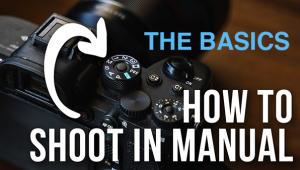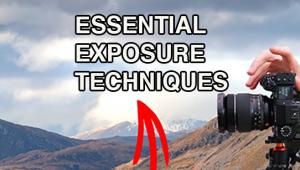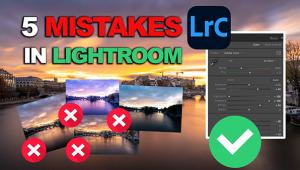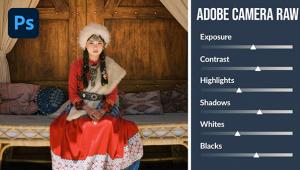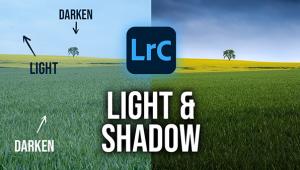Help!
| PLEASE READ THIS
BEFORE WRITING TO HELP! A number of readers wrote
offering assistance after we recently ran a HELP! inquiry letter asking
about an adapter to permit using a No. 76 silver battery in place of
the discontinued PX13 or PX625 mercury batteries. An advertiser, C.R.I.S
offers the MR-9 adapter, which will serve this purpose. They sell for
$29.95 plus S&H. Either check a recent issue for their ad or call
(800) 216-7579 to obtain more information about this device. This same
firm also has No. 76 batteries available. A less costly alternative
battery substitute is the Weincell PX13 equivalent battery which is
available through any Tiffen/Saunders dealer. We appreciate our readers
pointing out this battery solution of which we were not previously aware. Q. I have a big problem
and I need your advice urgently. Before I moved here, I was basically
photographing people in New York City for 18 years. But here in Ghana
you have to be an all-around photographer to get jobs. I have experimented,
read many books, and have a clear understanding about the subject lighting,
camera angle, reflective and translucent objects. I use a 35mm camera.
When I shoot products, I don't get a sharp picture. But, ironically,
when I use the same camera and lenses to shoot people, I get them crisply
sharp. I have three cameras including a brand new Nikon FM2 and new
lenses, 50mm and 105mm, but I have the same problem with all three cameras.
The products I shoot are not tiny products therefore they do not require
bellows on the camera. Whether or not I shoot with a close-up lens attached
to the camera's lens, the result is still blurry pictures. I am
talking about sharpness not depth of field. What amazes me the most
is the focusing distance of these products I shoot is within the camera's
lens focusing distance range. I'm so worried about this problem
because I'm losing clients. Please advise me on how to rectify
this problem. Could a macro lens or an APO lens give me sharp close-up
shots? Incidentally, my infinity shots are not sharp either. I use ISO
100 films. I'm impatiently waiting for your advice before I purchase
the appropriate lens or equipment for my close-up shots. I'll
be moving up to a 4x5 view camera soon. Is the Schneider 150mm APO a
good lens for close-ups and for photographing people? A.
It is difficult to critique your problem long distance with only your
few comments and two images to look at, but I will provide my best estimate
of solving the problem you have. The sample 5x7 color product print
of hair care bottles you sent does not appear to be as critically sharp
as the portrait. I assume you are using Nikkor lenses on your Nikon
camera bodies, not some off-brand lenses. If so, how are you determining
focus? Do you use autofocus or manual focus via the viewfinder screen?
I know the FM2N is manual focus, but you did not say what the other
cameras were. Is it possible the interchangeable focusing screen is
not seated properly, thus the image appears sharply focused in the viewfinder
but would not be critically sharp at the film plane? If all of your
pictures are unsharp this could be the problem. If you have a diopter
adjustment on the viewfinder eyepiece, this may be adjusted incorrectly.
But, why are your portraits sharp and products not? That is puzzling.
Another possibility is the color lab is using automated printing equipment
(enlarger) which is out of alignment. Have you had the same negatives
printed at another lab to check on this? Good quality close-up lenses
used on prime lenses such as your 50mm and 105mm should produce sharply
detailed images. A true prime macro lens (such as the Nikkor Micro 60mm,
105mm, or 200mm) would be a good lens. However, a macro zoom lens only
has closer focusing capability than a similar zoom range lens, so it
is not a true macro lens. The Schneider 150mm APO would be a good lens
for your 4x5 camera, but it is comparable in focal length to a 50mm
or 60mm lens on 35mm format. For medium-size product photography done
on a 4x5 my preference would be at least a 180mm and better yet, about
210 to 240mm for a medium telephoto effect with less distortion of the
product. I hope this brief analysis helps you find and correct your
problem. Good luck in your new business. Don't get discouraged. Q. I have an old
Pho-Tak camera. It takes 620 film which I know is discontinued. It says
Pho-Tak, Reflex I 14mm color corrected Bochmar Precision lens. It is
lacking a spool at the receiving end. I was wondering if there is any
type of adapter I could use so that I can continue using this camera.
Someone told me 120 film would fit, but it is lacking the 620 spool.
I would appreciate any help you can give me. Thanks. A.
First the bad news. Although 120 film is identical to 620 in size, the
spool is slightly thicker and larger in diameter, so 120 film normally
will not fit into the narrower film supply slot of most 620 cameras.
If this were the situation, there would be thousands of happy 620 users
today. A few firms do stock some 620 film though, so you might be able
to locate the correct size film to use. Now, as to locating a 620 spool.
Check with some local large photofinishers (not one hour labs as they
normally do not process roll film) and ask if they have a 620 spool
they will sell you. If this does not pan out, ask your friends if they
have an old 620 camera and if so, could you have a take-up spool since
they undoubtedly don't use it because of the scarcity of that
size film. Sometimes progress and evolution makes older usable products
into doorstops. Ever try to find an 8-track tape these days? Q. I prefer prints,
yet I get slide film and get prints of the shots I like best. Do I lose
the best results when doing it this way? What film has given optimal
results, and what speed? A.
Slide film is normally preferred for magazine reproduction because it
has a broader tonal range and generally more saturated colors than color
negative material. Besides you are at the mercy of the lab printing
the color negatives, which can also alter the color balance if they
don't keep close watch on their processing. Shooting slide film
then having prints made is generally more expensive and tends to lose
quality as most reversal color printing papers tend to build up contrast
not apparent on the original slide. In general, the slower film speeds
of any material--slide or color negative--will give the optimal results.
That is an ISO 100 or slower film speed. The color balance and rendering
of specific critical items (such as Caucasian flesh tones, blue sky,
whites, etc.) can vary in different brands of film and even in similar
named films from one firm or brand. That's my personal opinion
in a nutshell. Hope this assists you. Q. Thank you for
all the wonderful helpful info you have presented in the HELP! column.
I have a question that has been bugging me for a dozen years. Back when
I had a Contaflex III I utilized a Zeiss monocular for a long lens,
attached via a 27mm filter thread (Contaflex size) on the monocular,
which was exposed when the rubber eyepiece was unscrewed. When I moved
to a more modern SLR I fashioned a filter adapter by machining a 27mm
hole into a metal 58mm (Canon size) lens cap and epoxying an empty 27mm
into place to provide a 58-27mm step-down ring. I later found a 52-27
ring at another show which enabled the use of this rig on my Nikon SLR
without further adapters. My question is this--is the 27mm (0.5mm) thread
size a standard that is employed in telescopes or other devices that
makes sense to manufacture these adapters? Nobody seems to know at the
trade shows, and the two dealers I bought mine from had no idea what
these were used for. I would appreciate your help as this might just
open my world to other things I could experiment with. I am already
thinking of using the monocular with my Nikon CP900 digital, especially
if I can find a ready-made adapter. Thank you. A.
I don't have any personal experience trying to adapt viewing monoculars
or scopes to a camera, but I have heard of this being done to circumvent
the expense of buying a long telephoto when a similar optic is already
owned. I checked a recent catalog from a firm that is a source for odd
sizes of filters and adapters. (The Camera People, phone/fax: (970)
884-6045). They list a 27-37mm step-up ring and 37-49 or 52mm which
are more common camera lens thread sizes today, but don't have
a step-down adapter in 27mm. They checked references and found out that
B+W filters, imported by Schneider does list a 27-49mm adapter. You
can contact Schneider Optics at (516) 761-5000. To check a bit further,
I called Tiffen who has offered filters and adapters for many years.
They used to have 27mm products but do not now. They gave me the names
of two dealers that might have the 27mm step-down adapter you seek.
They are: Damar Photo Supply in Savannah, GA; (912) 925-9808, ask for
Dave Bellnoff. Another is Chambless Equipment in Ellijay, GA; (706)
636-5210. I trust that one or more of these leads might be able to assist
you. You don't have to make your own adapters. Q. I am a new subscriber.
I have one question that is important as I am buying new equipment.
I have a Sunpak 555 flash with TTL and a meter in my Nikon F3. Why would
I ever need an exposure or flash meter? A.
My Nikon catalog shows the Nikon F3HP (which I assume is the model you
have) has a basic center-weighted metering system and it has TTL flash
control. Again, I believe you may have the powerful grip model Sunpak
AF 555 flash (or possibly the somewhat less versatile hot shoe Sunpak
355, as I could not read your handwritten letter very well). Both are
capable of working with your Nikon SLR for TTL metering so they read
the light actually reaching the camera through the camera lens. If you
have the grip flash unit, and the proper synch cords, you can hold it
off the camera for better lighting than what you normally get from a
hot shoe flash connected directly above the camera lens. For this you
would not need a flash meter. But, if you plan to use two or more flash
units, or AC powered studio flash units, the camera's internal
flash metering cannot properly read the output from two (or more) flashes.
This is when you would need a handheld flash meter to determine the
correct aperture to set on the lens. The center-weighted metering in
your camera is excellent for general photography. But if you happen
to take pictures in overly white conditions (as in the snow, unlikely
there in Florida) or if you photograph a person in white against a pitch
black background, the center-weighted meter might not determine the
best exposure. This is when a handheld meter (particularly one with
incident light metering capability) would be helpful. In general, I
don't believe you would need a handheld exposure or flash meter
unless you take pictures under very unusual conditions. Besides, if
you work with color negative or black and white film, they have sufficient
exposure latitude, which will minimize any minor exposure error. Only
if you work with more sensitive color slide film do you need more precise
exposure control. I hope this clarifies the situation for you. Q. I would like to
ask HELP! to assist me in finding information and an instruction booklet
for a Gossen Sixti light meter for use on a camera accessory shoe. The
light meter is approximately the size of a Leica M meter. A. There
are two main sources for instructions for older equipment that I know
of. They are: John S. Craig, Box 1637, Torrington, CT 06790; (860) 496-9791
and Finger Lakes Photo Books, PO Box 309, Aurora, NY 13026; (315) 364-9581.
Have you checked with the current importer of Gossen products? For a
number of years these meters have been available through Bogen Photo
Corp., 565 E Crescent Ave., Ramsey, NJ 07446; (201) 818-9500. Hopefully
one of these firms will have the Gossen Sixti meter book you seek. Q. I have a problem
I can't solve and neither can the local camera stores. Enclosed
are two pictures of a Nikon 250 shot back and motorized drive for a
Nikon camera. I'd like to use it but I need to buy a Nikon camera
to match it and don't know which model Nikon to buy. Can you help?
Thanks much. A.
It's rather difficult to determine exactly which Nikon 250 magazine
back you have from the Polaroid you sent. Is it the model MF-4 250 magazine?
If so, my contact at Nikon told me it was intended for the older Nikon
F3 body. You might want to contact Nikon customer service at (800) 626-4566
when you have the back with you so you can give them any identification
data found on the back. Then they should be able to positively identify
the camera it was intended for. It's frustrating to have an accessory
product you want to use, but don't know the proper components
(camera body in this instance) to make it functional. We hope this steers
you in the right direction. |
- Log in or register to post comments
















